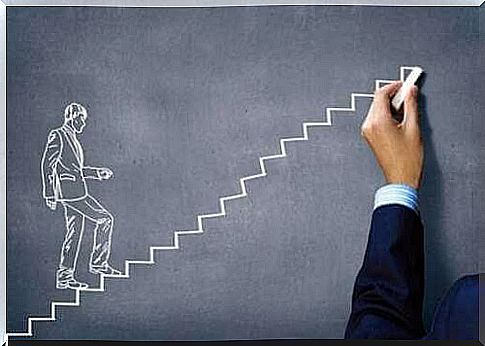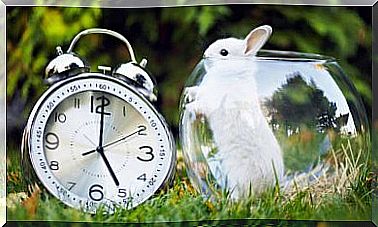The Theory Of Self-determination

The concept of self-determination has often been used in diplomatic and political contexts to describe the process by which a nation asserts its independence. However, this term also has a much more personal meaning and relates to psychology. It is the ability or action to make one’s own decisions and to control one’s life. In this sense, it is an essential element for psychological well-being. Self-determination theory holds that people are motivated to grow and change out of innate psychological needs.
The theory of self- determination identifies three innate and universal psychological needs. These are the need for competence, the need for relationships and the need for autonomy. Intrinsic motivation also plays an important role in this theory.
The meaning of the theory of self-determination
The theory of self-determination is about personality, human motivation and optimal functioning. He claims that there are two main types of motivation, intrinsic and extrinsic. Both have a great influence on who we are and how we behave.
This theory arose from the studies on motivation conducted in the 1970s and 1980s by researchers Edward L. Deci and Richard M. Ryan. Although it has grown and spread a lot since then, the basic principles of the theory come from the book that Deci and Ryan published in 1985 on the subject.

The first hypothesis of the self-determination theory is that people are ‘growth-oriented activities’. Facing difficulties and living new experiences is essential for building one’s own meaning. In this sense, Deci and Ryan’s theory argues that people act motivated by the need to grow and get satisfaction.
People are motivated by the promise of external rewards, such as money, rewards, or social recognition (known as extrinsic motivation). The theory of self-determination, however, mainly focuses on internal sources of motivation, such as the need to acquire knowledge or independence (known as intrinsic motivation).
The three psychological needs of the self-determination theory
According to the theory of self-determination, people need the following elements to achieve psychological growth:
- Competence: They need to learn jobs and acquire different skills.
- Relationships : it is necessary to feel a sense of belonging and attachment to other people.
- Autonomy: we must feel that we are in control of our behaviors and our goals.
Deci and Ryan argue that once these three elements are achieved, people become self-determined. They may therefore feel intrinsically motivated to seek what they want.
Importantly, the psychological growth described by the self-determination theory does not happen automatically. Even if we are oriented towards this growth, it also requires constant commitment. According to Deci and Ryan, social consent is essential. Through our relationships and interactions with others, we can promote or counteract personal well-being and growth.
Motivation and self-determination
According to Deci and Ryan, extrinsic motivation arises from an interest in what is external. The sources of this motivation are employee rating systems, rewards and compliments, or the respect and admiration of others.
Intrinsic motivation, on the other hand, comes from within and is associated with the activity itself. There are internal impulses that push us to behave in a certain way. To these are added our core values, our interests and our personal sense of morality.

Intrinsic and extrinsic motivation may seem opposite, with conduct consistent with our “ideal ego,” on the one hand, and one that leads us to conform to others’ standards, on the other. However, there is another important distinction of motivations. Indeed, the theory of self-determination distinguishes autonomous motivation from controlled motivation.
Autonomous motivation includes motivation that comes from internal sources, but also that of extrinsic sources if the individual has identified with the value of an activity and feels that it is in line with the image he wants to show.
The controlled motivation consists of:
- An external adjustment. A type of motivation in which the individual’s behavior is driven by external rewards or punishments.
- An internal adjustment. Motivation that comes from partially internalized activities and values and reasons such as avoiding embarrassment, seeking approval and protecting the ego.
According to the theory of self-determination, when an individual is driven by an autonomous motivation, he feels more independent. When the individual is driven by a controlled motivation, he will feel the pressure of having to behave in a certain way and will live with little or no autonomy.









